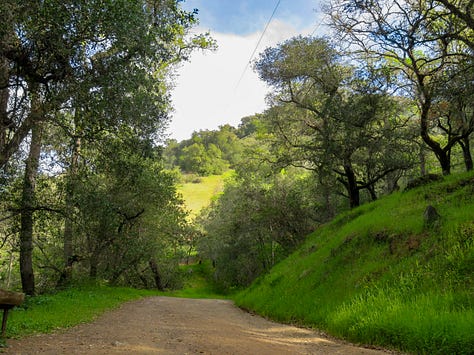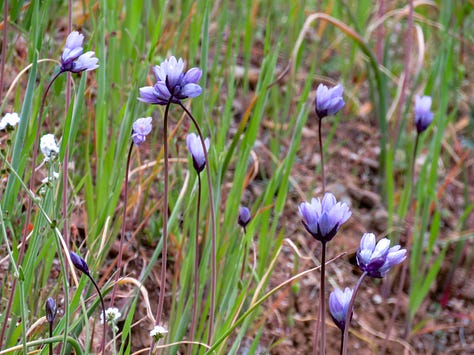NAPA VALLEY, Calif. — What do you get when you combine 900 acres of verdant oak woodlands with nearly 700 acres of open space, all set alongside a dancing creek? The answer: Moore Creek Park in St. Helena at 2602 Chiles Pope Valley Road next to Lake Hennessey's shores. According to Jay Jessen, Napa County Regional Park and Open Space District park steward and naturalist, the park is open after all of the recent rains, thanks to the hard work of folks like him at NOSD.






The countryside here holds a rich history and prehistory. Thousands of years ago the lands of Moore Creek Park were peopled by the Patwin, Wintun and Wappo Indigenous people, some of whose descendants proudly carry on the traditions and history of their ancestors today — for example, the Suscol Intertribal Council, which works to promote cultural exchanges between the public and Indigenous people in Napa County. In the more recent past, a Napa County Historical Society article by Marie Bowen explains that the year-round creek finds its origins on Howell Mountain's eastern vicinity, then runs into Lake Hennessey along with Conn Creek. During its meandering flow it is surrounded by Las Posadas State Forest's arboreal lands.
Once called Moore's Creek, it achieved its moniker from the first Euro-settlers in the surroundings, the William G. Moore family, who, it is said, were squatters along Howell Mountain in the 1840s. The Moores hailed from Ireland, and William listed “shepherd” as his occupation on the Napa Valley census of 1860. He had the privilege to live as a squatter, according to the rights listed in the Federal Land Act of 1851. This claim was legal if the land onto which the squatter was proposing to live consisted of fewer than 160 acres. It is believed that Moore was widowed, then remarried after an undetermined time and moved to near Sebastopol.
Springtime usually brings masses of wildflowers scattered amidst miles of trails for equestrians, hikers and bicyclists here. If you are one of those people, you can choose moderate Valentine Vista Trail, moderate Moore Creek Trail or the most challenging hike, the Bay Area Ridge Trail.
Looking up and across the Valentine Vista trail, you’ll see a panoramic sky view with bucolic and benevolent oak-studded scenery in which to take pleasure. As you settle into the walk, details that define the woods begin to capture your attention. Logs on the forest floor are upholstered with lichen and moss, and fleshy-leaved flowers are scattered about. Come April, in an opening under the sunshine, squadrons of poppies — startlingly, vividly orange — ask to be admired. A fine fuzz of flowers ahead reveals itself upon closer inspection to be violet vetch, a non-native plant, along with blue dicks, lupine and other species of wildflowers.
Besides oak woodlands and grasslands, the forest here includes Douglas fir, madrone and chaparral that all provide homes to secretive critters such as bobcats, gray foxes, coyotes, black bears and mountain lions. The wind in the trees’ canopy hints at the complexity of activity within the layers of branches. Lives of acorn woodpeckers, insects and layers of lichen and other plant matter all combine into a veritable maelstrom of life here.
Along with the sound of the cooling breeze is the inviting jingle of Moore Creek as it swirls along, replete with creek critters such as crayfish and sculpin. Birdsong is another of the languages spoken here. Scrub jays, Stellar's jays, California quail, red-tailed hawks, ravens and more add texture to your day. Avian species sighted here can be found at Moore Creek Park's growing ebird list.
It's the season to enjoy the manifestations of spring's fecundity, and the deluge of life in a Napa County park is not to be missed. Take time to answer the irresistible pull of the land.
The current status of park trails
If today’s story captured your interest, explore these related articles:
Birdwatching in Napa County reveals avian wonders and conservation champions
Calistoga's Old Faithful Geyser: from tourist trap to natural wonder
Kathleen Scavone, M.A., retired educator, is a potter, freelance writer and author of three books: “Anderson Marsh State Historic Park: A Walking History, Prehistory, Flora, and Fauna Tour of a California State Park,” “People of the Water” and “Native Americans of Lake County.” She loves hiking, travel, photography and putzing in the garden.







Directions would be nice as well as degree of difficulty on the trails. Pat Dell